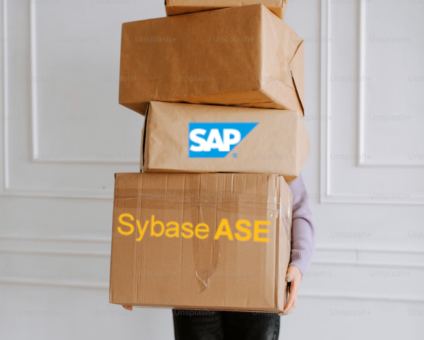Physical retail is still where the magic happens. According to new research by RSR, 85% …
![]()
Cloud-native POS platform for seamless omnichannel customer experience.
![]()
A single hub for all promotions campaigns.
- Omnichannel ExperienceCreate seamless customer experiences
- Device IndependencePOS agnostic to form factor or operating system
- Self-CheckoutDo more with fewer associates
- Mobile StoreLeverage POS from anywhere
- POS on the GoEnable associates to sell outside of the store
- Unified PromotionsStreamline and simplify promotion workflows
- CX ConnectAllow customers to engage with POS during checkout
- Composable CommerceCreate the store experience you want
![]()
The most advanced synchronization solution for databases and file systems.
![]()
Data configuration and batch automation across different disparate systems and vendors.
-
Data Replication
- Multi-tier DistributionReplicate thousands of remote locations
- Cloud Database ReplicationCapture live changes from on-premise to the cloud
- High Availability and Load BalancingEnsure 24/7 access to data and scale efficiently with demand
- Analytics and ReportingCapture the whole picture with real-time reporting
- Multi-masterMaintain consistency of data in a peer to peer setup
- Data WarehouseReplicate live and historical data to a warehouse
- MigrationsConduct live data migration with no downtime
-
-
Data Integration
- Master Data ManagementChanges propagate across the entire system, allowing you to maintain a centralized view of all parts of your core business entities.
- Application IntegrationReduce dependencies, complexity, and risk to build a high-performance, data-driven application.
- Web ServicesIntegrate multiple systems using web services or build a business application using a service-oriented architecture.
- Data WarehouseIntegrate disparate data from multiple systems so you can transform data for better business intelligence and reporting.
- Data MigrationConduct live data migration during critical server replacements, storage upgrades, and data center relocations—with no downtime.
- ImplementationIntegration consultants help design, develop, and deploy an implementation of our products.
- DevelopmentThe product developers can add features, enhance existing functionality or build support for new platforms.
- TrainingEngage our experienced training resources to gain in-house knowledge and expertise on Jumpmind products.
- SupportLeverage product engineers to resolve issues, fix defects and provide updates or patches.
- Proof of ConceptDetermine the feasibility of implementing our products and get answers to your questions quickly.
Beyond the Hype: What Retailers Really Want from Tech in 2025 Europe’s biggest retail conference …
What a fun week it was for women from across the country who came together …
View all Blog Posts
The new release of SymmetricDS Pro 3.16 data replication software simplifies setup, improves performance, and …
Sybase ASE (more recently known as SAP Adaptive Server Enterprise), announced its end of mainstream …
Azure Blob Storage has become a popular option for storing files in the cloud. And …
View all Blog Posts
Jumpmind Powers Point of Sale and Promotions Execution for Landmark Retail, One of the Largest …
Retail Technology Leader Jumpmind to Enable Mobile Point of Sale and Inventory Management for DTLR/VILLA …
The retailer is charting its next chapter with retail technology modernization to power inspired omnichannel …
View all Customer Stories
43 percent say handling online order returns in-store is a top challenge, and that increases …
After nearly a century in business, the legendary Canadian fashion retailer is retooling to streamline …
The Solution Addresses Modern Retail Challenges with Innovative Promotions to Captivate Inflation-Weary Shoppers NRF 2024, …
View all Blog Posts
![]()
Cloud-native POS platform for seamless omnichannel customer experience.
![]()
A single hub for all promotions campaigns.
![]()
The most advanced synchronization solution for databases and file systems.
![]()
Data configuration and batch automation across different disparate systems and vendors.
-
Data Replication
-
-
Data Integration
-
Retail Retail trends, technology, and enhancing the customer experience
-
Data Thoughts on data matters, dialects, performance, and security
-
Customer Stories How Jumpmind impacts the businesses of our clients
-
Videos & Webinars Watch on demand demos, reviews, and tours of our products
-
Company News Get the scoop on Jumpmind's growth and impact
View all Blog Posts
Top 3 Ways to be the Best Support Customer

At JumpMind we provide support services for a wide variety of customers across many industries. We enjoy working with our customers, learning about their synchronization scenarios, and answering any questions they may have. In all of our interactions, we’ve found that some customers have a real knack for making it easy to help them, while it’s not as intuitive to others. In that spirit, here’s JumpMind’s top 3 ways to help us help you.
- Provide Context – With many of our customers, we’ve worked with them throughout their design process as part of a JumpStart consulting engagement, so we already have some general context about their synchronization scenario. With others, we don’t have that context, so jumping into a very specific technical problem can be tough. Providing some context to your data synchronization scenario as part of a support request goes a long way in helping us understand the broader context. A list of context facts can be found in our JumpMind SymmetricDS design document under the “Quick Facts” section, which is the same template we use when consulting to design a data synchronization scenario. In addition to context on your synchronization scenario, some context around the overall problem helps as well.
- Attach a Snapshot – SymmetricDS Pro includes a built-in support feature that bundles up a set of information about the current synchronization scenario and state of SymmetricDS including configuration and run-time information. We call this a “Support Snapshot” and it is a great way for us to get some details about your configuration to help troubleshoot any questions you may have. The following links provide the steps to generate a support snapshot from either the SymmetricDS Pro web console or command line. See How to take a support snapshot from the web console and How to take a support snapshot from the command line.
None of your specific application data will be sent as part of the snapshot, just SymmetricDS configuration and information. Including this as an attachment to your support ticket will save time and get things started out on the right foot. - Send to Support@JumpMind.com – Some customers get ahold of individual email addresses for one or more of our engineers and tend to send support questions directly to them versus the main support queue. As people who have used support services from other organizations, we totally get it. Once you get a hold of a good support engineer, you don’t want to let them go! The good news about JumpMind is ALL of our support engineers are excellent. They ALL work on the product itself and have intimate knowledge of the product. At JumpMind, you won’t get a “support” engineer, you really get a developer who just also happens to do support. Sending to Support@JumpMind.com ensures you don’t send something to an engineer who is on vacation, etc. Using this email also gets your ticket logged into our system and ensures it will be tracked and answered as quickly as possible.
We hope this helps, and please let us know your thoughts. We’re always interested in hearing from our customers.


















